Case Study
Identifying Opportunities in NY Gold Futures
The Socrates Platform caters to a wide range of investors. For most users, Socrates is a tool for researching long-term market activity and investment opportunities. For advanced users, the platform can also be used to research short-term trading opportunities. This case study focuses on the latter, illustrating how the platform was utilized to navigate the intricacies of short-term trading in the New York Gold Futures market.
Please keep in mind that short-term trading can accelerate or amplify the risk of financial loss. It is not recommended for novice or passive investors.
Market Scenario: Using Socrates to Research NY Gold Futures
In June 2023, the New York Gold Futures market presented a compelling scenario for traders — the period was marked by dynamic market movements. Understanding the patterns and trends in this kind of situation is critical to understanding whether the market leaned towards a bullish or bearish trajectory.
The Socrates Platform offers various independent computer models to aid in your research and help you develop an ideal trading strategy for this type of scenario.
Decoding Market Signals With Timing Arrays
The Timing Arrays in Socrates are tailored to analyze and aggregate cyclical activity in global financial markets across different time levels. This makes the Arrays an excellent starting point for researching markets.
When applied to NY Gold Futures, the Monthly, Weekly, and Daily Timing Arrays collectively indicated a turning point in June 2023. This alignment suggested a significant market movement, which could guide traders to focus on specific dates for potential action.
Within Time Arrays, the Monthly view is the most important, as it is less susceptible to change based on short-term noise and false moves. As seen in the graph below, the Monthly Timing Arrays revealed June as a crucial month, characterized by strong signals across various models including Aggregate, Empirical, Volatility, and Long Term cycles. This may indicate a direction change. Isolated highs in June and October provided additional confidence in these specific dates.
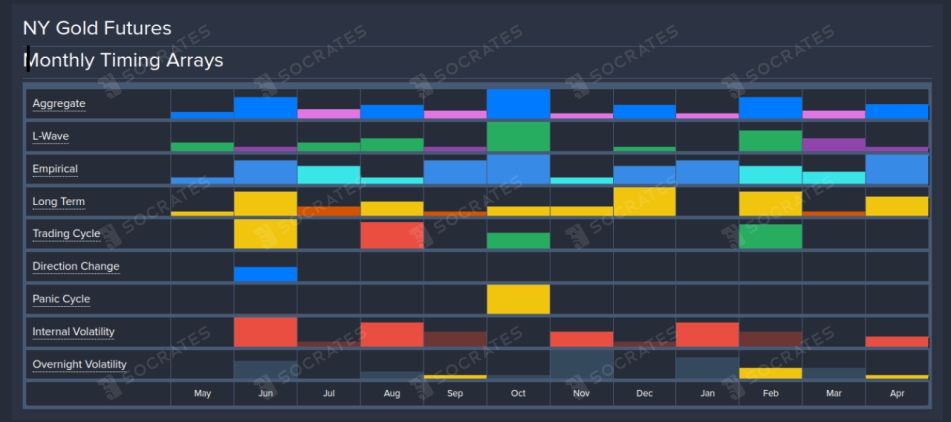
Note
Complementing the monthly insights, the Weekly Arrays highlighted strong Aggregate signals for the weeks starting June 28th and July 5th. This period was marked by increased volatility, adding another layer to the market analysis.
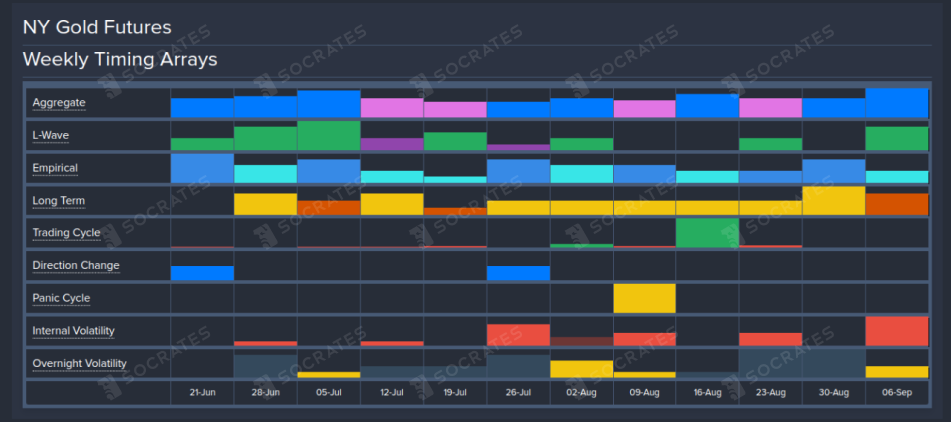
Note
Narrowing down to the daily level, June 29th emerged as a particularly significant date, marked by the high Aggregate and the largest Empirical bar. While the Daily time level is the most susceptible to short-term noise and false moves in a market, it does provide a supplementary data point. In this instance, the pinpointed date helps us direct our focus as we dive deeper into price movements through the Reversal System.
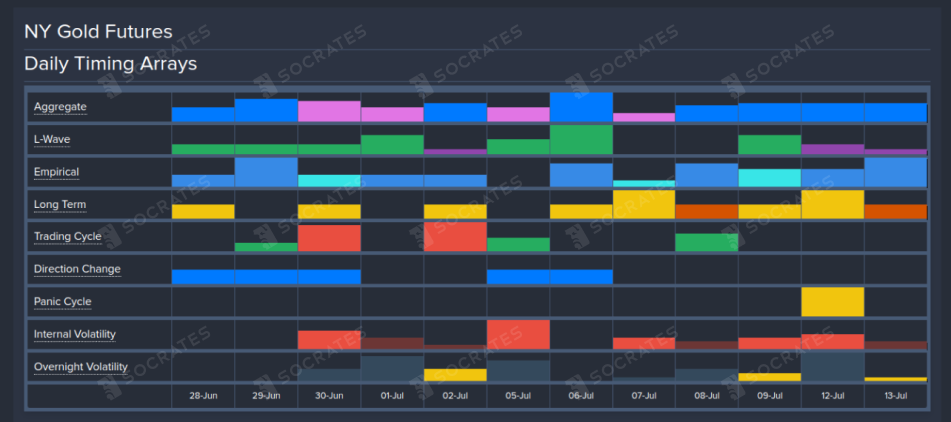
Assessing Price Considerations Using the Reversal System
The Reversal System in Socrates helps users identify potential pressure points in price movement. These price points are also known as Reversal points — or more simply as Reversals.
On June 29th, the system identified a significant low. Despite breaching four bearish reversals, the market failed to close below them. This low spike, followed by a rebound above the reversals, suggested a potential market low aligning with the Daily Array's findings.
This scenario illustrated the principle of time and price meeting. The fact that the reversal was not breached on a closing level indicated a reverse approach, signaling a bullish reaction.
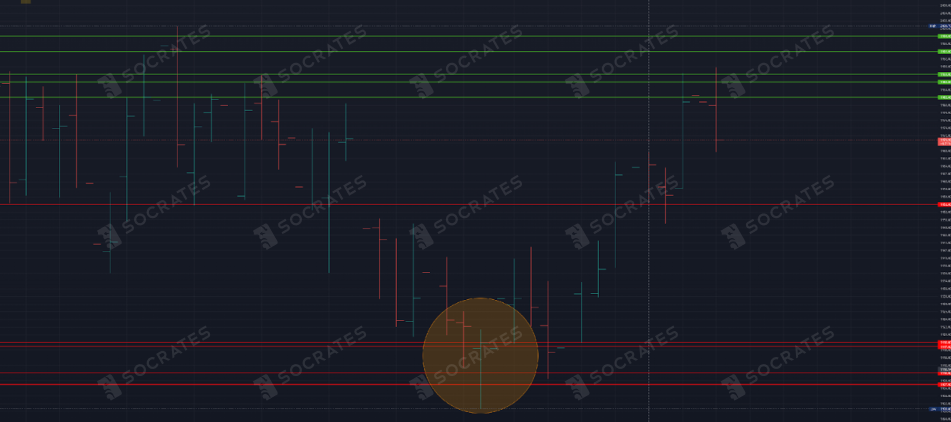
Note
When looking at price activity, we can also study the stochastics, which gauges market momentum. The stochastic model confirmed the high oversold nature of the market.
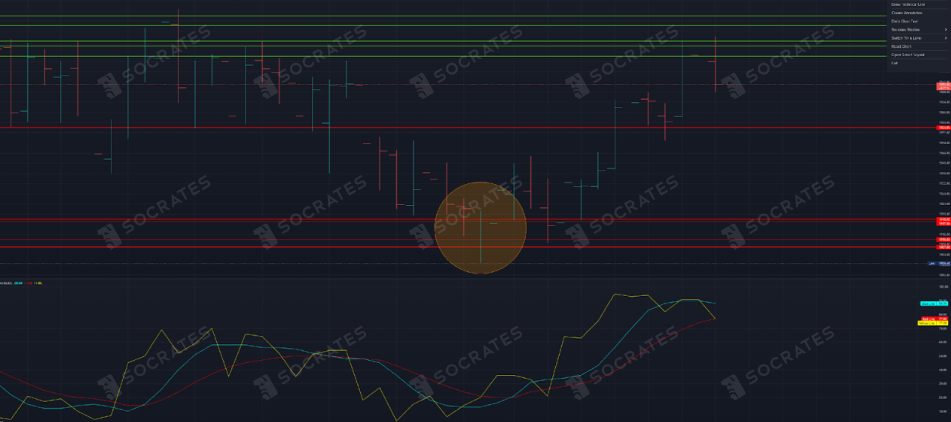
Reviewing Patterns from the Global Market Watch
Another tool found in Socrates is the Global Market Watch (GMW). This is a pattern recognition model that offers a broader perspective on market behavior across different time levels.
Accessed on June 28th, the Global Market Watch indicated that both the daily and weekly levels were bearish, while the monthly level suggested an impending reaction high. This supported our earlier analysis.
When examining longer timeframes, the yearly level remained bullish, but the quarterly level showed signs of resistance. This view reinforced confidence in the impending shift from a bearish to a bullish market trend.

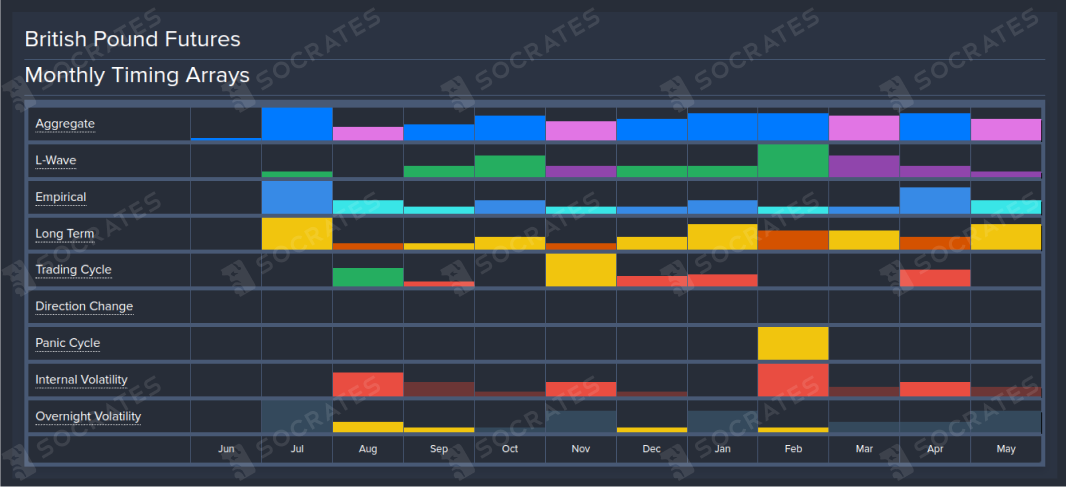
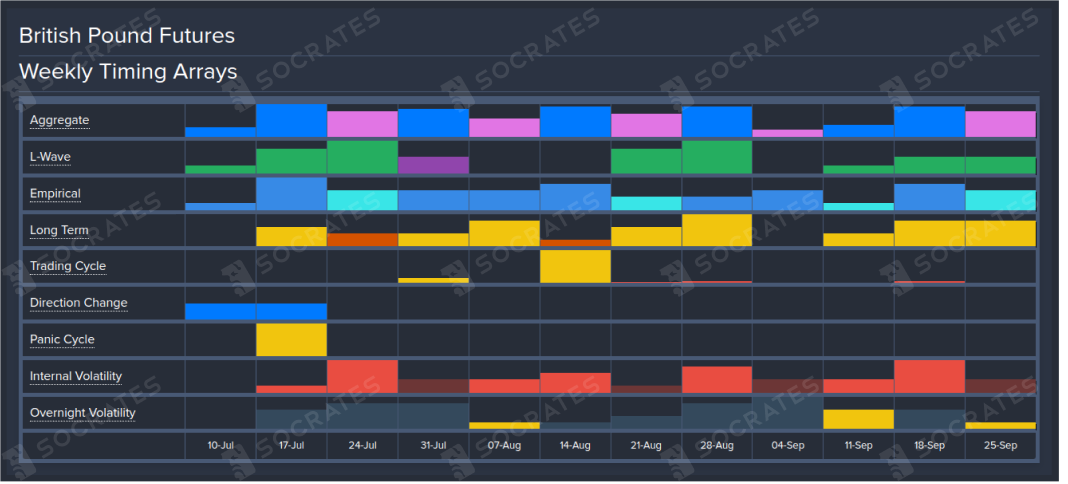
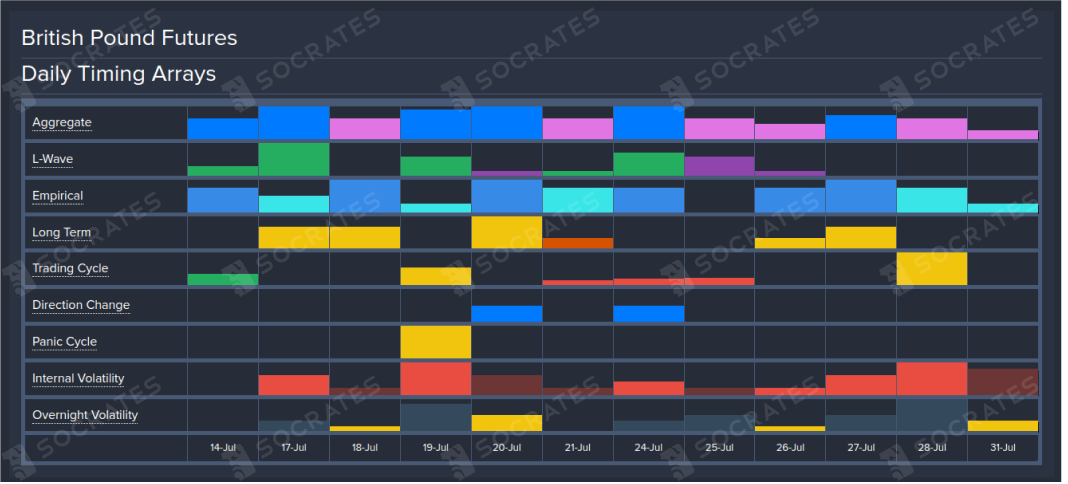
As you can see, the Monthly Timing Arrays indicated a potential turning point for 23 July 2023, with strong signals for the Aggregate, Empirical, Volatility, and Long Term cycles.
The Weekly Timing Array supported the Monthly view. The week of July 17th demonstrated the highest Aggregate bar, with future choppiness suggesting a possible volatile period ahead. The Empirical model further suggested a market reaction and directional change.
Zooming in with the Daily array, July 17th signified the largest Aggregate bar, with July 19th showing a Panic Cycle model reading, and July 20th showing a reading on the Direction Change model.
Note
The Daily time level in the Socrates models is the most susceptible to short-term noise and false moves in a market. One should never solely rely on or heavily weigh the Daily level. It is for advanced users to consider as a supplementary data point in their research.
Confirming Analysis With the Energy Model
The Energy Model measures the rate of change in market trends, helping to identify when a market is potentially reaching a turning point. This model is particularly useful for confirming signals from other models, adding an extra layer of validation to the analysis.
When we look at the Daily Energy Model, we can see the rate of change slowing down as we move to a more finite time frame. The model suggests that the market is oversold, which supports our view of a potential reversal.
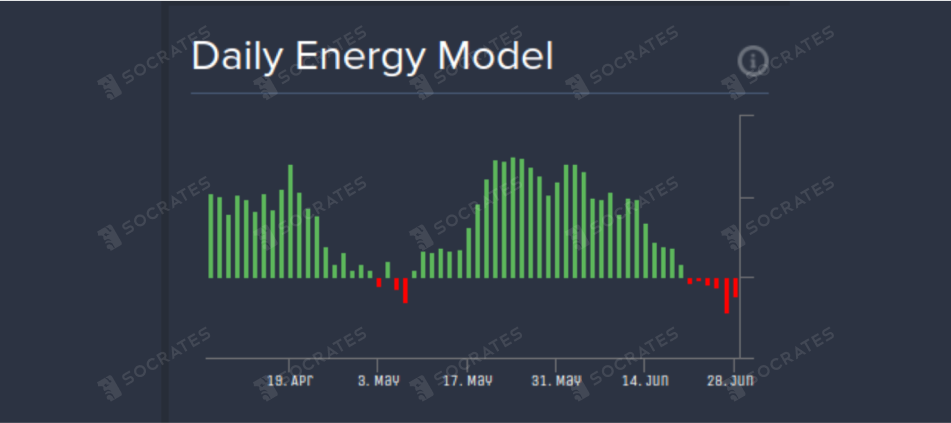
Insight Leads to Action
Based on this research, an investor might consider a bullish strategy to capitalize on the identified market reversal. Let’s recap how this investor used Socrates to arrive at this strategy.
To start, we used the Timing Arrays to reveal a crucial market turning point, pinpointing July 29th as a key date.
The Reversal System then provided price action insights, revealing significant resistance and a failure to close below bullish reversals. This indicated a potential upward move. The Global Market Watch (GMW) confirmed a bullish long-term outlook, despite short-term bearish signals. Complementing this, the stochastic and Energy Model suggested an oversold market.
All indicators pointed to June 29th, when the market signaled a bullish shift. With this information, any investors would be in a better position to strategize and take action. This scenario is only one of the countless ways Socrates can help you research the global market and make informed financial decisions.
IMPORTANT
Socrates is not a financial service, we do not provide financial advice or recommendations. The platform serves as a research tool for informational and educational purposes only.
Is Socrates right for you?
Explore our Membership Plans to find a version of Socrates that works for you. Or check out our guide on Socrates vs. Competitors.